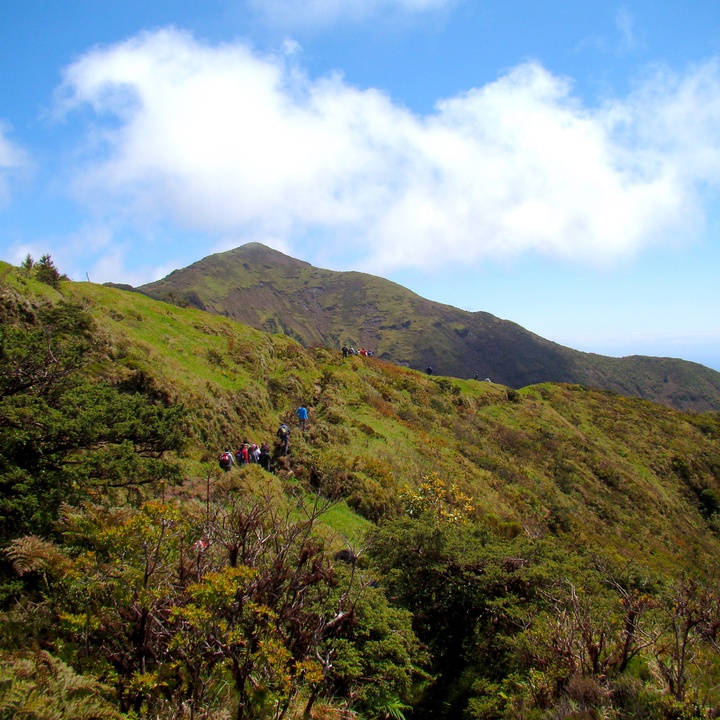Text size:
Pico da Vara PRC07SMI
Recommended gear
Appropriate footwear for walking, waterproof jacket, hat, sunscreen and water.


The access to the trail is conditioned through the filling of an application form available on the site: http://trails.visitazores.com/pt-pt/trilhos-dos-acores/sao-miguel/pico-da-vara.
This trail goes along the protected area for the Management of Habitats and Species of Tronqueira e Planalto of Graminhais, the Nature Reserve of Pico da Vara and allows access to Pico da Vara, the highest point of the island, with 1103 meters high.
It begins near the Forest Guard House of the Reserve of Atalhada, village of Santo António Nordestinho. The hiker should follow the marks passing by the wood of Atalhada until arriving the viewpoint with a view over the villages of Santo António Nordestinho and Algarvia. At the fork, you should take the road on the right hand side, flanked by japanese cedars (Crytomeria japonica). Reaching a dam, you should cross it and follow the marks until the place of Bardinho, where you should go up among a wood of japanese cedars towards Planalto dos Graminhais. Arriving at this place, where it is possible to see the south coast, you should take the road on the left hand side, heading Pico da Vara.
These roads were used in the past for accessing areas of coal production, cattle handling and commerce between the municipalities of Nordeste and Povoação. Along the climbing, you will come across two landmarks that sign the falling of two planes – one from Air France, in 1949, and another from the Portuguese Air Force, in 1943. At the fork, choose going right, to reach the geodesic landmark of Pico da Vara, where it is possible to enjoy wide views over the crater of Povoação (to the south), Planalto dos Graminhais, the crater of Furnas Volcano and its lake (to the west) and the volcanic massifs of Fogo and Sete Cidades at the bottom.
On the way back you should go down the trail and turn to the right hand side towards the Forest Guard House. It is possible, in these higher areas, to observe examples of endemic vegetation such as Azores juniper (Juniperus brevifolia), Azorean holly (Ilex azorica), Azorean heather (Erica azorica) and peat bogs formed by Sphagnum sp., fundamental for the water catchment. As you go down, the natural flora gives place to public woods of japanese cedars, whose management is certified - FSC@ (License Code FSC@ C119744). The trail ends ahead, near the Guard House, where it is possible to visit the endemic garden.

